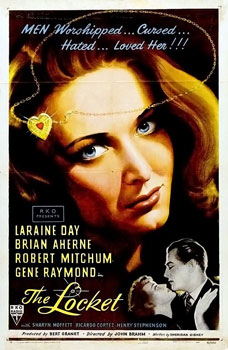Plot
A respectable-looking man appears unannounced and uninvited at an upper crust wedding at a Park Avenue residence in Manhattan. He asks for the groom, John Willis, to be summoned. He is Harry Blair, a psychiatrist, and the sobriety of his appearance, speech, and manner lead to his acceptance. He recounts in a series of nested flashbacks a tale of how Willis’ fiancé and Blair's ex-wife, Nancy, is not only a kleptomaniac, inveterate liar, and murderer but is also unpunished for any of her crimes. [3]
Apparently all her misdeeds result from her being falsely accused of stealing a family heirloom as a child. Blair recounts that Nancy first dates then splits up with an artist, Norman Clyde, who contacts Blair on the eve of the execution of the man convicted for a murder she committed and he helped conceal. Unaware of any of this until told by Clyde shortly into his hasty marriage to Nancy, Blair is skeptical and recommends Clyde seek counseling for his delusions. Instead Clyde jumps out a window of Blair’s upper story office.
Blair seeks to put the doubts Clyde sowed behind him, but finds his own reasons for questioning Nancy's veracity. When, five years into their marriage, he finally is faced with the truth of her serial thefts and compulsive deceits she has him fraudulently committed to a mental institution. Some unspecified time after divorcing him she becomes engaged to Willis.
It unclear whether she recognizes he is the son of the woman who had accused her of thievery, and that her childhood bete noir is set to become her mother-in-law.
In spite of Blair's passion in recounting the details of the previous decade, an increasingly unsteady Willis remains determined to see the wedding through. The bridesmaids attend to Nancy as the ceremony nears.
Dressed in her gown and veil, Nancy is gifted a family keepsake passed down over three generations of Willis women - the same heart-shaped golden locket that had once been her childhood downfall, now affectionately clasped around her neck by the very same woman who had tormented her. Overwhelmed, she is beset by hallucinations of her sordid past and collapses physically and mentally during the wedding march. In the aftermath she is committed to a mental institution, with her ex-husband counseling her fiancé and his mother to show her both patience and compassion.
Reception
Critical response
When the film was released the staff at Variety magazine praised the film, writing, "Story carries the flashback technique to greater lengths than generally employed. The writing by Sheridan Gibney displays an understanding of the subject matter and proves a solid basis for the able performances achieved by John Brahm’s direction. Latter gears his scenes for full interest and carefully carries forward the doubt – and audience hope – that Nancy is not the villainess." [5]
In 1992 film historians Alain Silver and Elizabeth Ward praised the unusual melodrama in the RKO visual style. "It is distinctive in its flashbacks within flashbacks, with the story often being told by a third or fourth person removed. This device is handled effectively in preparation for the climactic flashback, which reveals the truth." [6]
Contemporary film critic Dennis Schwartz gave the film a mixed review in 2006, writing, "A psychological drama about a woman with a dark secret from her childhood that is carried over to her adult life. It's a post-war baroque melodrama, creaky as wooden steps in a mildewed house ... It was too wooden a presentation to generate anything but a few sparks ... It's a somber story, with a lot of heavy-handed things going on. The complexities of the heroine's character were well presented. The analyst's comments about her stealing to get even with Mrs. Willis seemed to be a reasonable explanation, if taken at face value ... The Locket only had some glitter but not enough substance. Though, as muddled as it was, it still kept me alert wanting to know what gives. The problem is I never satisfactorily found out what gives." [7]
This page is based on this
Wikipedia article Text is available under the
CC BY-SA 4.0 license; additional terms may apply.
Images, videos and audio are available under their respective licenses.
